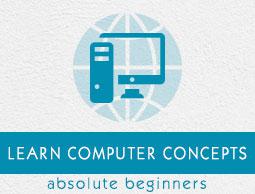Communication and Collaboration
Communication refers to exchange of information between persons through internet. Internet provides a basis for communication and collaboration which can be done using mail, chat, skype, etc. When dealing with official matters, electronic mail helps in the exchange of messages text documents, web pages, audio, video, etc.
In this topic, we are going to discuss in detail about basics of email, email addressing, configuring email client, using emails, opening email client, mailbox, creating and sending a new email, replying to an email message, forwarding an email message, sorting and searching emails, advance email features, sending documents by email, activating spell check, using address book, sending softcopy as attachment, handling spam, instant messaging and collaboration, using emoticons and some of the internet etiquettes.
Basics of E-mail
Electronic mail is an application that supports interchange of information between two or more persons. Usually text messages are transmitted through email. Audio and video transfer through email depends on the browser in use. This provides a faster way of communication in an affordable cost.
Advantages of E-mail
Functionalities like attachment of documents, data files, program files, etc., can be enabled. This is a faster way of communication at an affordable cost.
Disadvantages of E-mail
If the connection to the ISP is lost, then you can’t access email. Once you send an mail to a recipient, you have to wait until she/he reads and replies to your mail.
Email Addressing
Email address is a unique address given to the user that helps to identify the user while sending and receiving messages or mails.
Username − Name that identifies any user’s mailbox
Domain name − Represents the Internet Service Provider (ISP).
@ Symbol − Helps to concatenate username and domain name.
For example − user_name@domain_name
Username − user, Domain name − gmail.com
| Sr.No. |
Communication and Collaboration Concepts & Description |
| 1 |
Configuring Email Client
Configuring email client is setting up a client which includes the various steps. |
| 2 |
Using E-mails
The main purpose of using email is to exchange information between persons. The process starts with opening of client email and ends with sending and verifying mail to recipients. |
| 3 |
Mailbox: Inbox and Outbox
Inbox is an area where you can see all the received mails. Outbox is an area where the outgoing messages or messages which are in process of sending or which are failed to send are stored. |
| 4 |
Advance Email Features
Email provides many advanced features which includes sending attachments like documents, videos, images, audio, etc. |
| 5 |
Instant Messaging and Collaboration
Instant messaging is real time mutual communication between persons via internet. This is a private chat. Once the recipient is online, you can start sending messages to him/her. |
| 6 |
Internet etiquettes
Internet etiquettes are also called as "Netiquette".Netiquettes are basic rules or techniques which are accepted worldwide |
Summary
This chapter has given a clear idea about the electronic mail and its features. Thus, we gained a deep understanding about the basics of email, email addressing, configuring email client, using emails, opening email client, mailbox, creating and sending a new email, replying to an email message, forwarding an email message, sorting and searching emails, advance email features like sending document by email, activating spell check, using address book, sending softcopy as an attachment, handling SPAM, Instant Messaging and Collaboration, using smiley/emoticons and some internet etiquettes.


